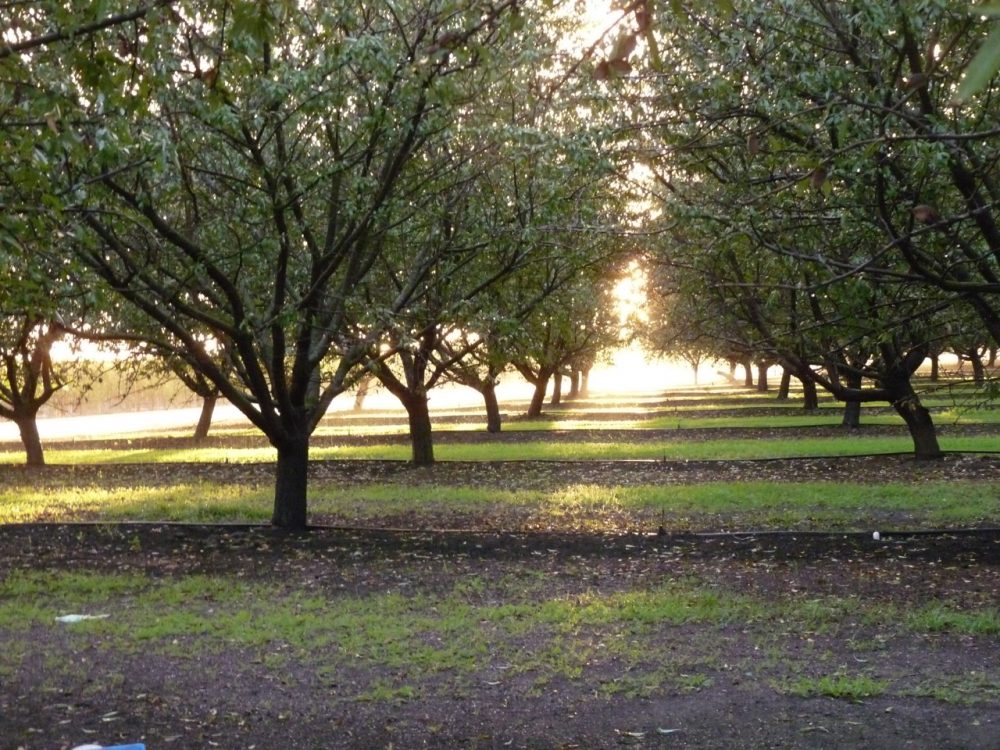Almonds
Innovative Biomass Conversion to Help Ag
New Biomass Conversion Idea Could Help Ag Industry
By Patrick Cavanaugh, Farm News Editor
A new biomass process will convert woody ag waste, including almond hulls and shells, into ethanol, which has a demand and makes the conversion possible.
Eric McAfee is Chairman, CEO and co-founder of Aemetis Inc., a Culpertino-based industrial biotechnology company producing renewable chemicals and fuels using patented microbes and processes.
The current bio-generations and biomass plants are shutting down left and right because they have lost their profit due to low electricity prices.
“The fundamental problem that we have is that the biomass energy business makes electricity, and that electricity is being replaced by solar energy and wind energy, which is funded by a 30 percent federal tax credit,” McAfee said.
“When the cost of energy is 30 percent lower because the federal government has supports, of course the biomass energy producers are challenged to compete with that lower cost source of energy,” McAfee explained.
Data shows that about 70 percent of the plants in California are already shut down, and more are shutting down each month.
That’s where Aemetis steps in. “Our view is that biomass in the form of orchard waste, vineyard waste – even forest waste, actually – has a very valuable opportunity to become the fuels that could go directly into California automobiles,” McAfee said. “Converting the biomass into fuels rather than biomass into electricity has been the missing link.”
Doing all the conversion work is a proprietary microbe. “It’s a little organism that acts sort of like yeast in that it takes in these wood molecules, and it converts them into different molecules in its body, and then it excretes ethanol as one of the products it makes,” McAfee said.
It’s similar to the wine industry, where the yeast takes sugar from the grape juice and converts it to alcohol.
“We’re taking orchard wood, and we’re producing liquid fuels that are very valuable in California because they’re high in oxygen, so they burn more cleanly than gasoline, and they’re high in octane, so they make the engine perform sort of like a high performance racing engine would. It’s very valuable as a fuel and good for the environment. The plant that will do all this is currently being built in Keyes, CA. We’re actually in initial engineering right now. We expect to have it up and running in … approximately 18 months,” McAfee said.
And McAfee noted that the conversion process is not just a theory. “This technology has been actually produced in six different plants around the world. Over 200 million dollars of investments have been made in the development of the technology,” he said.
“We’re essentially taking an agricultural waste, and we’re adding the additional volume of ethanol that’s mandated under California law. It’s a 10 percent blend in California, but the federal government has approved a 15 percent blend. I do expect over time that California will be at not only 15 percent, but even higher blends,” McAfee said.
“There’s a lot to work with – literally hundreds of thousands of tons of agricultural waste produced every year in addition to the removal of the orchard wood itself after its useful life of 20 to 30 years,” McAfee said.
And while several UC Cooperative farm advisors are working on orchard chipping and leaving it in the orchard – as well as bringing almond shells and hulls back into the orchard, which could be beneficial to the orchard soil – McAfee noted that the industry will figure out a balance.
“What we’re going to see over time is the right balance of the biomass that needs to go back into the field verses really true waste biomass that needs to be removed,” he said.
“There’s about a million acres of almonds in California, and over a 20 to 30 year lifespan, it means 40,000 to 50,000 acres a year of almonds gets removed. That’s a tremendous amount of biomass that has to be put somewhere, and right now, turning it into electricity in these large plants has been a solution, but we certainly think that turning it into liquid fuels and supplying California motorists is going to be an exciting future for these farmers,” McAfee said.
Again, the conversion plant should be operating by mid-2018. “We’re excited about it. It’s very good for the air quality in the Central Valley, because we don’t want to go back to the 1960s and ’70s and end up with these farmers basically having very few choices, and deciding that paying an air quality fine is the best of worst choices,” McAfee said. “I would suggest that, frankly, turning it into fuel in a very clean process, such as what we run, could be a big part of maintaining improved air quality in the Central Valley of California.”























